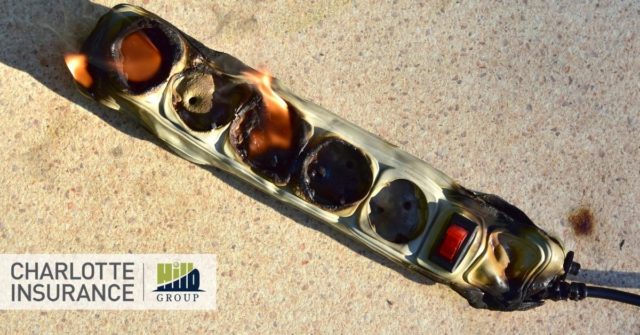Many homeowners dream of becoming the next DIY rockstar, taking on projects big and small around their home. But mishandling electrical issues can lead to disasters like fires, injury, and more.
Protect your home, your family, and your home insurance rates by avoiding these common electrical mistakes.
Overloaded Circuits
It can happen at any point, but it’s especially common during the holidays – overloading electrical circuits. You plug one too many things into an outlet or you have too many things turned on that are on the same circuit. You turn something else on and everything shuts off. The breaker’s been tripped and now you have to get the power back on. To avoid this, map your circuits and avoid plugging in too many things in the same area and definitely into the same outlet.
Lack of Junction Box
Known as junction boxes, j boxes or electrical boxes, these are crucial to any installation of an electrical item, like a light fixture. These boxes protect electrical connections and wires from damage and contain any sparks or heat that can occur due to a short circuit or loose connection. Too many homeowners connect wires outside of a junction box, putting their home at risk of a fire. If you don’t see a junction box when changing a fixture, install one before you install the new light.
Short Wires
Maybe you inherited a fixture or outlet with short wires or maybe you cut them too short. Either way, don’t try to create a connection with them. They’re difficult to manage and potentially dangerous. When cutting wires, leave yourself plenty to work with. If you cut it too short, purchase wire extensions from your local home improvement store. You can always cut them down to a more manageable length of three or four inches once they’re added to your short wire.
Sinking Outlets and Switches
Have you ever changed an outlet or switch and watched it sink into the wall, creating an ugly gap between the cover and the outlet or switch? That gap isn’t just unsightly, it’s also dangerous. It means the outlet or switch doesn’t have proper support which can lead to loose connections later. Loose connections can arc or overheat, leading to a potential fire. Instead of ignoring the problem, you may be able to use rigid electrical box spacers to create the correct alignment and connection – just make sure that it’s up to code first.
No GFCI Outlets
Ground Fault Circuit Interrupter (GFCI) outlets are a necessary safety feature in any home. They monitor the power between an outlet and an appliance. If any variation is detected, the power is cut immediately to prevent electrocution. GFCI outlets are especially important in kitchens and bathrooms, particularly near water. If you don’t have these installed in your home, you need them. These outlets keep your home and family safe.
When in doubt, call an electrician. Not every home project can be DIYed safely, and it might be cheaper in the long run to pay a professional from the beginning, instead of paying to fix multiple problems later.
While you’re taking care of your home, make sure to take care of your home insurance needs, too. Contact us at Charlotte Insurance to answer any questions, discuss coverage, or change your policy limits.

